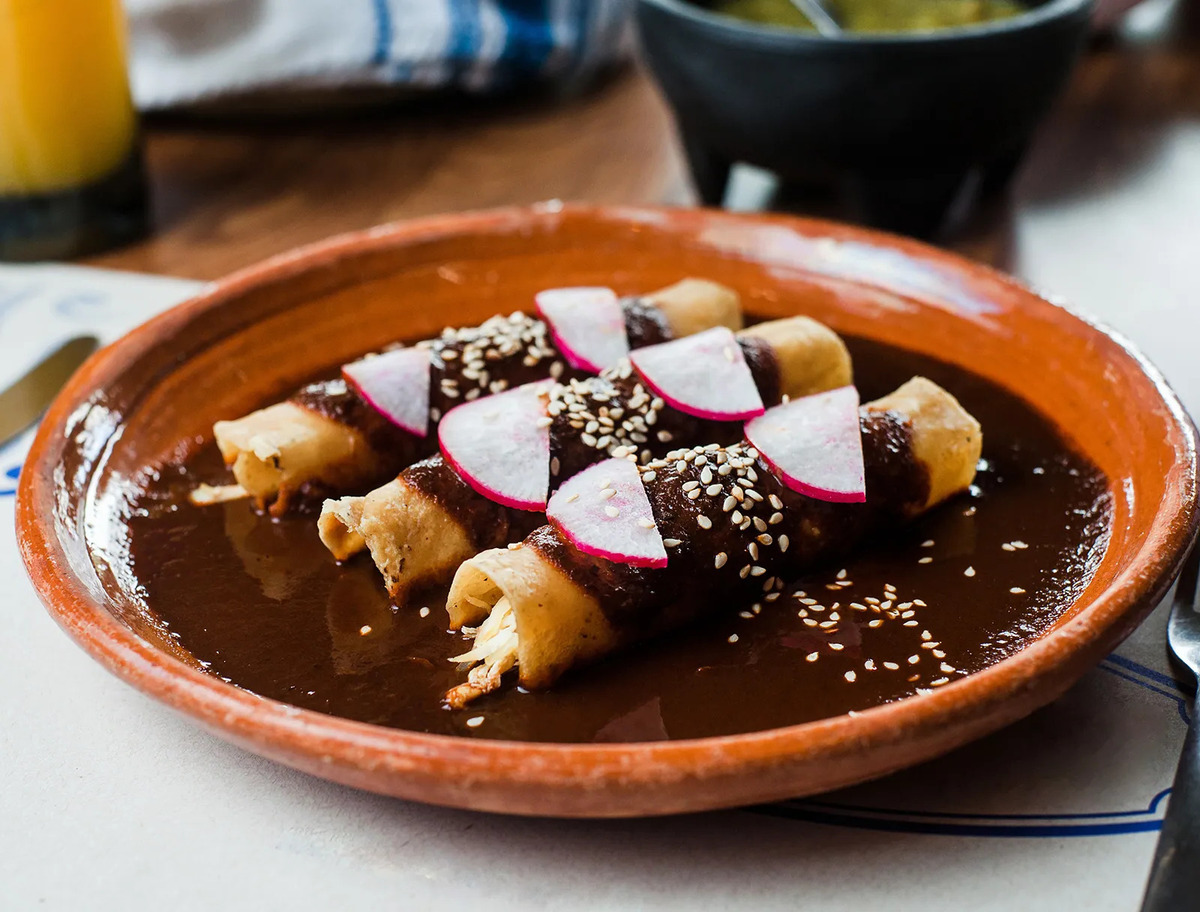The Fascinating Origins Of Mexico’s National Dish Mole

Have you ever wondered about the origins of Mexico's national dish mole? This rich, flavorful sauce has a history as complex as its taste. Mole, pronounced "MOH-lay," comes in various types, each with a unique blend of ingredients like chocolate, chili peppers, and spices. The story of mole dates back to pre-Columbian times, blending indigenous and Spanish influences. Some say nuns in Puebla created it to impress a visiting archbishop, while others believe it evolved from ancient Aztec recipes. Regardless of its true beginnings, mole remains a beloved staple in Mexican cuisine, symbolizing the country's rich cultural heritage.
The Birthplace of Mole
Mole, Mexico's national dish, has a rich history that spans centuries. This complex sauce, made from a blend of spices, chocolate, and chiles, has roots in various regions across the country. Let's explore the key places that contributed to its creation.
Puebla
Puebla is often credited as the birthplace of mole. Legend has it that nuns at the Convent of Santa Rosa created the first mole poblano to honor a visiting archbishop. They combined over 20 ingredients, including chocolate, to create a sauce that would become iconic.Oaxaca
Oaxaca, known as the "Land of the Seven Moles," offers a variety of mole recipes, each with unique flavors and ingredients. Mole negro, made with dark chocolate and chiles, is a standout. This region's indigenous Zapotec and Mixtec cultures heavily influenced mole's development.
The Ingredients that Define Mole
The magic of mole lies in its ingredients. Each region adds its own twist, creating a diverse array of flavors. Here are some key ingredients that make mole special.
Chiles
Chiles are the heart of mole. Different types, such as ancho, pasilla, and mulato, contribute to the sauce's depth and complexity. Each chile adds a unique flavor, from smoky to sweet.Chocolate
Chocolate, often unsweetened, gives mole its distinctive richness. This ingredient, introduced by the Aztecs, balances the heat of the chiles and adds a velvety texture.
The Cultural Significance of Mole
Mole is more than just a dish; it holds cultural significance in Mexico. It is often prepared for special occasions and celebrations, symbolizing unity and tradition.
Day of the Dead
During the Day of the Dead, families prepare mole to honor their ancestors. This dish, rich in history and flavor, serves as a connection between the living and the deceased.Weddings and Festivals
Mole is a staple at weddings and festivals. Its preparation is a communal activity, bringing people together to celebrate and share their heritage.
Modern Interpretations of Mole
While traditional mole recipes remain beloved, modern chefs have started experimenting with new interpretations. These contemporary takes on mole showcase its versatility and enduring appeal.
Fusion Cuisine
Chefs around the world are incorporating mole into fusion cuisine. From mole tacos to mole-infused pasta, these innovative dishes highlight mole's adaptability.Vegetarian and Vegan Mole
With the rise of plant-based diets, vegetarian and vegan mole recipes have gained popularity. These versions use ingredients like mushrooms and tofu to replicate the rich, complex flavors of traditional mole.
Where to Taste Authentic Mole
To truly appreciate mole, one must taste it in its place of origin. Here are some top spots in Mexico where you can savor authentic mole.
El Mural de los Poblanos, Puebla
This restaurant in Puebla offers a traditional mole poblano that stays true to its roots. The rich, flavorful sauce is a must-try for any mole enthusiast.Casa Oaxaca, Oaxaca
Casa Oaxaca serves a variety of moles, including the famous mole negro. The restaurant's dedication to preserving traditional recipes makes it a top destination for mole lovers.
Mole's Rich History
Mole's rich history makes it more than just a dish. This flavorful sauce, with its blend of chocolate, spices, and chilies, tells a story of cultural fusion. From ancient Aztec roots to Spanish influences, mole represents the heart of Mexican cuisine. Each region in Mexico has its own unique twist, showcasing local ingredients and traditions. Whether you're enjoying mole poblano or mole negro, you're tasting centuries of culinary evolution. Next time you savor mole, remember the rich tapestry of history and culture behind every bite. This dish isn't just food; it's a journey through time, a celebration of Mexico's diverse heritage. So, when you think of Mexican cuisine, let mole be a reminder of the country's vibrant past and its delicious present.

